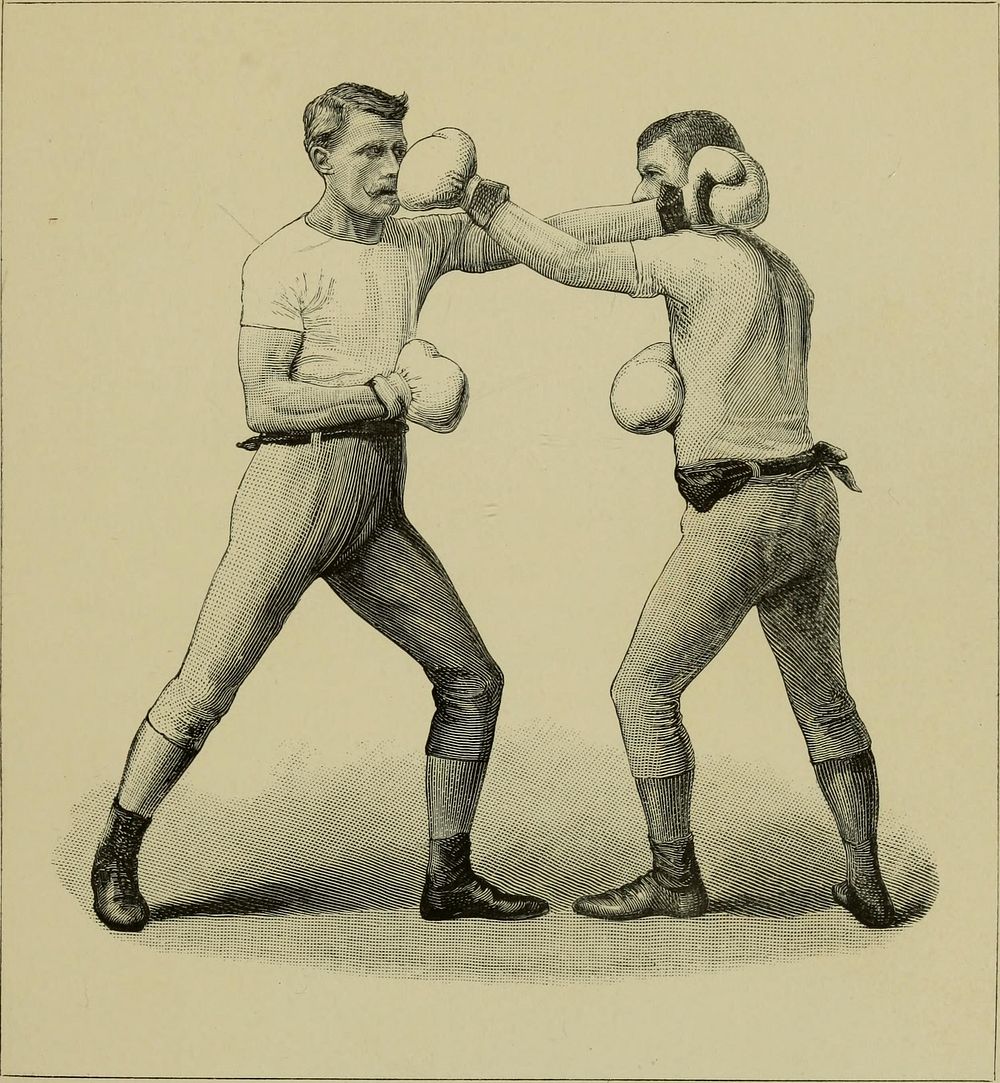https://creativecommons.org/publicdomain/zero/1.0/https://www.rawpixel.com/image/9975426

Identifier: fencing1890poll (find matches)Title: FencingYear: 1890 (1890s)Authors: Pollock, Walter Herries, 1850-1926 Grove, F. C Prevost, Camille Michell, E. B Armstrong, Walter Castle, Egerton, 1858-1920Subjects: Fencing Boxing WrestlingPublisher: London : Longmans, GreenContributing Library: Boston College LibrariesDigitizing Sponsor: Boston Library Consortium Member LibrariesView Book Page: Book ViewerAbout This Book: Catalog EntryView All Images: All Images From BookClick here to view book online to see this illustration in context in a browseable online version of this book.Text Appearing Before Image:uth. Never shut the eyes. Never cross the legs, or get them close together. Never lose your temper or your courage. Never enter or leave the ring in a set-to with a strangerwithout shaking hands with him. Never, if you can avoid it, work round to your left. Never, if you can help it, let your opponent stand betweenyou and a strong light. Never let your right foot be in front of the left. Never turn your back or run away. Do not rush after a man who is retreating in good order. Amongst affirmative precepts the following are worthremembering :— Hit with the big knuckles of the hand, and not with thethumb or small knuckles. Having led-off, whether you hit or miss, get away again outof distance. If you are the shorter man, do not * stand still to be shotat, but do most of the leading-off. Unless you can show thatyou are distinctly the quicker and cleverer man, length of reachwill tell, and you will pay the penalty of your inches. If you are much the hghter man, do not make your lead-oifText Appearing After Image:Figure XVI.—Left-hand cross-counter THE ART OF BOXING 169 heavy, but draw your man, and at every opportunity counterhim with your whole strength and weight. Having got home a hit, do not at once attempt to repeat it,for you may very hkely be countered next time. If you are getting the best of a round be very careful, andkeep out of distance. Let well alone, and ^spar for time.You need not do better, and you may do worje. Always retain your *form, even if the other man displaysgross faults of style and attitude. By imitating his style youabandon one of your chief advantages. A word should be said here as to the duties and powers ofjudges and referees. There is this unquestionable defect inboxing with gloves, as compared either with pugilism or withracing and games of most kinds, that it depends upon thejudgment of the bystanders, or some of them, to decide whichis the better man. Something has already been said aboutthe leading principles which should guide a judge in giving hisverdiNote About ImagesPlease note that these images are extracted from scanned page images that may have been digitally enhanced for readability - coloration and appearance of these illustrations may not perfectly resemble the original work.
Original public domain image from Wikimedia Commons
Public DomainFree CC0 image for Personal and Business use